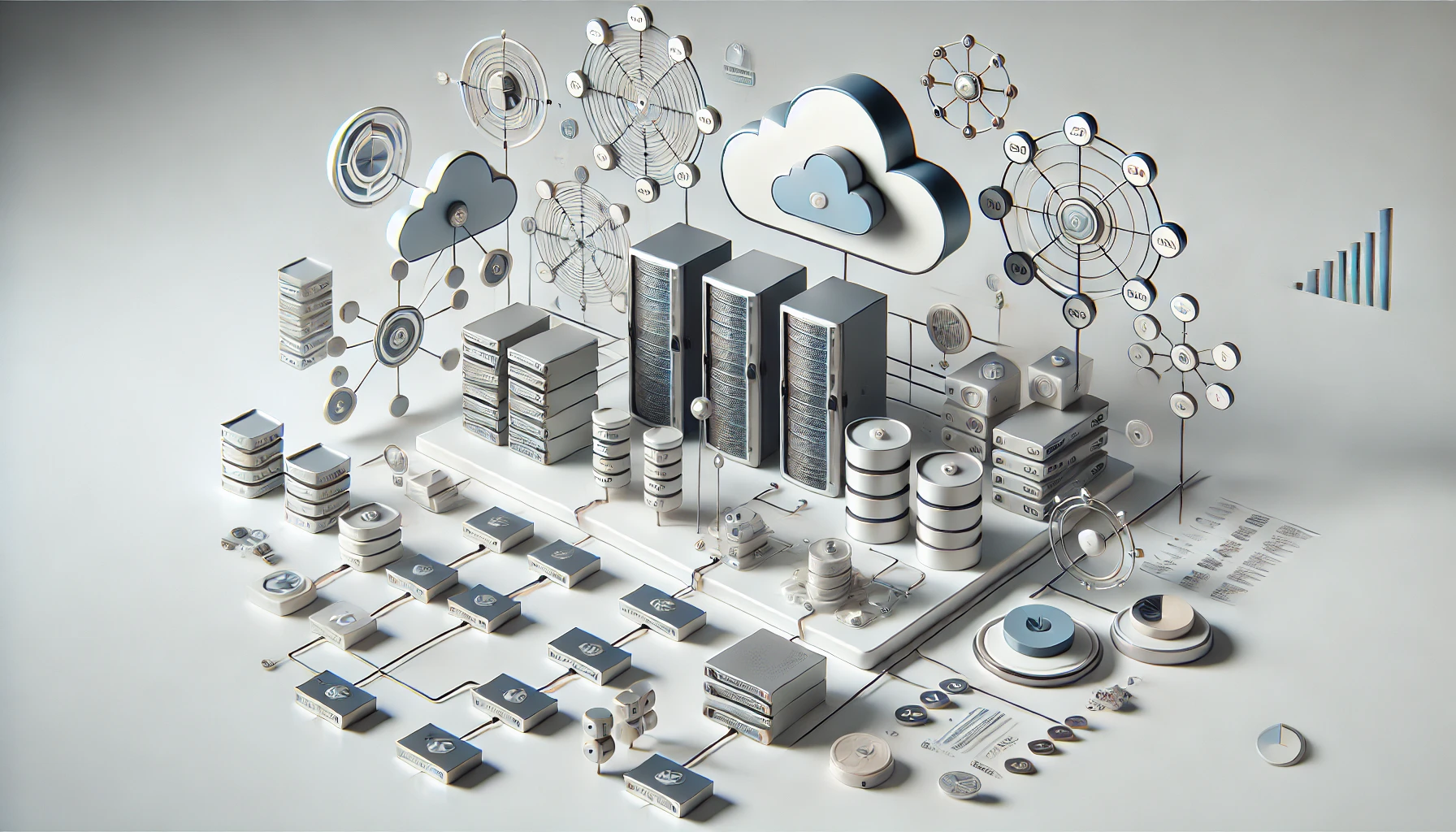You may not be aware of the diverse landscape of data processing systems, each designed to handle specific tasks and datasets efficiently. From batch processing to interactive processing, there are nine distinct types that play crucial roles in various industries. Understanding these systems can provide valuable insights into optimizing data handling processes and enhancing overall operational performance. Explore how each type caters to different requirements and discover which systems align best with your organization’s needs for streamlined data management and analysis.
Batch Processing
Batch processing is a method where data is collected, processed, and then outputted in groups or batches. One of the key benefits of batch processing is its efficiency in handling large volumes of data at once. By processing data in batches, it reduces the need for continuous human intervention, making it a cost-effective solution for processing tasks that do not require real-time results. However, a drawback of batch processing is the delay in obtaining results since data is processed at scheduled intervals rather than instantly.
When comparing batch processing with real-time data processing, batch processing shines in handling high volumes of data efficiently, especially for tasks that do not require immediate responses. Real-time data processing, on the other hand, provides instant results and is suitable for applications where immediate responses are crucial, such as online transactions or monitoring systems. Understanding the differences between batch processing and real-time data processing can help organizations choose the most suitable method based on their specific data processing needs.
Stream Processing
Stream processing is a method of real-time data processing that involves the continuous analysis of data as it flows through a system. This approach allows for the immediate processing of data as it is generated, enabling organizations to make quick decisions based on up-to-the-second information. Stream processing systems are often built on event-driven architecture, where actions are triggered in response to specific events or patterns in the data stream.
Real-Time Data Processing
Efficiency and immediacy are paramount in today’s data-driven world, where Real-Time Data Processing, also known as Stream Processing, plays a crucial role. Real-Time Data Processing focuses on minimizing data latency, ensuring that information is processed and delivered without delay. This type of system emphasizes data synchronization, enabling immediate updates and responses to incoming data streams.
Real-Time Data Processing is designed to handle high volumes of data in a continuous flow, making it ideal for applications requiring instant decision-making or real-time analytics. By processing data as it is generated, organizations can gain valuable insights quickly and take immediate action based on the most up-to-date information available.
Implementing Real-Time Data Processing systems requires robust infrastructure and specialized software capable of handling the rapid processing of data streams. These systems are commonly used in scenarios where timely responses are critical, such as financial trading, online gaming, and IoT applications. Embracing Real-Time Data Processing can give businesses a competitive edge by enabling them to react swiftly to changing conditions and make informed decisions in real-time.
Event-Driven Architecture
In modern data processing systems, Event-Driven Architecture stands out as a pivotal framework that leverages real-time data streams to trigger automated responses based on specific events. This architecture follows event-driven design patterns, which enable systems to react in real-time to changes or occurrences in the environment. One of the key advantages of Event-Driven Architecture is its ability to handle a large volume of events concurrently, making it suitable for applications requiring scalability and responsiveness. However, with this scalability comes challenges. Managing the flow of events, ensuring the order of processing, and maintaining system performance under heavy loads are some scalability challenges that organizations may encounter when implementing Event-Driven Architecture. To address these challenges, it is crucial to design the system with scalability in mind, using appropriate event-driven design patterns and technologies to optimize performance and ensure smooth operation even as the system grows in complexity and scale.
Real-Time Processing
Real-Time Processing is crucial in data systems for its speed and ability to provide immediate updates. This type of processing enables instant decision-making capabilities by processing data as it is received. With Real-Time Processing, you can ensure that your data is always up-to-date and that decisions are made swiftly based on the most current information available.
Speed in Data Processing
Achieving speed in data processing is crucial for organizations looking to operate efficiently in today’s fast-paced digital landscape. Data latency, which refers to the delay between data generation and its processing, can significantly impact decision-making and operational effectiveness. To enhance processing efficiency and reduce data latency, organizations often adopt real-time processing systems. These systems enable data to be processed instantly as it is generated, providing up-to-date information for timely decision-making. By minimizing data latency through real-time processing, organizations can improve their responsiveness to changing market conditions and customer needs.
Efficient data processing is essential for organizations to stay competitive and agile in a rapidly evolving business environment. Real-time processing systems play a vital role in ensuring that data is processed quickly and accurately, enabling organizations to make informed decisions in a timely manner. By investing in technologies that prioritize speed in data processing, organizations can streamline operations, enhance customer experiences, and drive innovation in today’s data-driven world.
Immediate Data Updates
For organizations seeking to maintain a competitive edge in today’s fast-paced digital landscape, immediate data updates are essential. Real-time processing enables data synchronization, ensuring that the information available for analysis is up-to-date. This allows for real-time analytics, giving organizations the ability to make informed decisions based on the most current data.
Data consistency is crucial in immediate data updates. Continuous updates ensure that all systems are working with the same information, reducing the risk of errors or discrepancies. By maintaining data consistency through immediate updates, organizations can trust the accuracy of their analytics and decision-making processes.
Implementing a system that provides immediate data updates not only enhances operational efficiency but also supports timely decision-making. Whether it’s monitoring customer behavior, tracking inventory levels, or analyzing market trends, real-time data processing empowers organizations to act swiftly and stay ahead in today’s dynamic business environment.
Instant Decision-Making Capabilities
To capitalize on the benefits of immediate data updates, organizations must leverage the instant decision-making capabilities offered by real-time processing. By integrating AI algorithms and predictive analytics into their systems, companies can make informed decisions quickly and efficiently. Machine learning plays a crucial role in real-time processing by enabling automated decision-making based on data patterns and trends.
AI algorithms enhance decision-making by analyzing vast amounts of data in real-time, providing insights that aid in making accurate and timely choices. Predictive analytics further refines this process by forecasting future outcomes based on historical data and trends. These technologies work hand in hand to enable organizations to react promptly to changing circumstances and make decisions that align with their business objectives.
Through the use of machine learning and automated decision-making, real-time processing empowers organizations to respond swiftly to market shifts, customer needs, and operational challenges. By embracing these instant decision-making capabilities, businesses can gain a competitive edge and drive success in today’s fast-paced digital landscape.
Online Processing
When it comes to data processing systems, online processing plays a crucial role in enabling real-time interactions and transactions. Online processing ensures that data is validated and maintains integrity throughout the process. Additionally, it focuses on maintaining data consistency and synchronization across various systems. Here are four key aspects of online processing:
- Real-time interactions: Online processing allows for instant communication and transactions to occur without delays, enhancing efficiency and customer satisfaction.
- Continuous data validation: Ensuring that the data entered or processed is accurate and meets specific criteria, online processing helps maintain the quality of information stored.
- Data integrity maintenance: Online processing safeguards data from corruption or unauthorized access, ensuring that the information remains reliable and trustworthy.
- Synchronized data consistency: By synchronizing data across different systems in real-time, online processing helps in maintaining consistent and up-to-date information across the organization.
Online processing is critical for businesses that rely on quick decision-making and real-time data availability.
Multiprocessing
Multiprocessing involves the use of multiple processors or cores within a single computer system to execute tasks simultaneously, thereby increasing efficiency and performance. By utilizing multiple cores, tasks can be divided among them, enabling workload distribution and resource allocation optimization. This leads to improved multi-core performance as the system can handle more processes concurrently.
One key benefit of multiprocessing is data flow optimization. With multiple processors working in parallel, data processing tasks can be completed more swiftly and efficiently. Workload distribution ensures that tasks are divided effectively among the available cores, preventing bottlenecks and maximizing the system’s capabilities. Additionally, resource allocation plays a crucial role in ensuring that each core receives the necessary resources to perform tasks efficiently.
Time Sharing
In data processing systems, Time Sharing is a method that allows multiple users to simultaneously access a computer system. This system divides the computing resources among different users to ensure efficient utilization and fair resource allocation. Here are some key points to help you understand Time Sharing:
- Efficiency benefits: Time Sharing enhances efficiency by enabling multiple users to use the same system concurrently. This minimizes idle time and maximizes the utilization of resources.
- Resource allocation: Through Time Sharing, resources such as CPU time, memory, and peripherals are allocated dynamically based on the users’ needs. This ensures that each user gets a fair share of resources without monopolizing them.
- Fairness: Time Sharing promotes fairness by providing each user with equal opportunities to access the system resources. This prevents any single user from dominating the system.
- Interactive nature: Time Sharing systems are interactive, allowing users to interact with the system in real-time, making it suitable for applications where immediate responses are crucial.
Distributed Processing
Moving from the concept of Time Sharing to Distributed Processing in data processing systems brings a shift towards a decentralized approach to computing. Distributed Processing involves breaking down tasks across multiple computers, enabling them to work on different parts simultaneously. This approach offers benefits like increased reliability and faster processing times. However, it also introduces scalability challenges as the system grows.
To address scalability, data partitioning techniques are used in Distributed Processing. By dividing data into smaller subsets and distributing them across multiple nodes, system performance can be enhanced. Common data partitioning techniques include horizontal partitioning, which divides data rows, and vertical partitioning, which separates data columns.
Balancing the workload across nodes and ensuring data consistency are crucial aspects in Distributed Processing. Proper implementation of data partitioning techniques is essential to optimize performance and mitigate scalability issues. By strategically dividing data and tasks, Distributed Processing systems can leverage the power of multiple nodes efficiently, paving the way for enhanced computational capabilities.
Parallel Processing
Utilizing parallel processing in data systems revolutionizes computational efficiency by executing multiple tasks simultaneously across interconnected processors. This approach offers significant performance benefits by dividing the workload among multiple processors, reducing processing time and enhancing overall system speed. However, it also presents scalability challenges as systems need to efficiently manage and synchronize tasks across numerous processors to maintain optimal performance levels. Here are key points to consider:
- Increased Speed: Parallel processing allows for faster execution of tasks by splitting them across multiple processors, leading to improved performance and quicker results.
- Enhanced Efficiency: By distributing tasks, parallel processing optimizes resource utilization, enhancing system efficiency and productivity.
- Complexity Management: Scalability challenges arise as coordinating tasks across multiple processors requires sophisticated synchronization mechanisms to prevent bottlenecks and ensure seamless operation.
- Resource Allocation: Balancing the workload distribution and resource allocation across processors is crucial to maximizing the benefits of parallel processing while mitigating scalability challenges.
Interactive Processing
When considering data processing systems, Interactive Processing stands out as a crucial component that facilitates real-time user engagement and responsiveness. Interactive data visualization allows users to dynamically explore and analyze data, promoting a deeper understanding of information. This real-time response capability enables immediate adjustments based on user inputs, enhancing the overall user experience.
Furthermore, Interactive Processing plays a vital role in customer feedback gathering. By providing interactive interfaces, companies can collect valuable insights and preferences directly from users, enabling them to make informed decisions and improvements promptly. This direct engagement fosters a sense of collaboration between users and the system, leading to more personalized interactions and tailored outcomes.
Frequently Asked Questions
How Does Data Processing Impact Cybersecurity Measures?
Data processing plays a crucial role in data security by identifying cyber threats, analyzing potential risks, and implementing protective measures. It enhances cybersecurity measures through real-time monitoring, rapid response, and continuous assessment of data vulnerabilities.
What Are the Common Challenges in Implementing Multiprocessing Systems?
When it comes to multiprocessing systems, you may encounter challenges like hitting scalability limitations and struggling with resource allocation. It’s like trying to fit too many puzzle pieces into a small space.
Can Interactive Processing Systems Handle High Volumes of Data?
Yes, interactive processing systems can handle high volumes of data efficiently. They offer real-time processing capabilities, ensuring quick data access. Moreover, they typically provide scalability options, allowing you to expand system capabilities as your data processing needs grow.
How Does Distributed Processing Ensure Data Integrity and Consistency?
To ensure data integrity and consistency, distributed processing distributes tasks across multiple nodes, enhancing reliability by redundantly storing data. This approach maintains efficiency by allowing parallel processing, minimizing bottlenecks and ensuring consistent data across the system.
What Are the Key Differences Between Parallel and Distributed Processing?
When comparing parallel and distributed processing, remember that performance comparison is crucial. Parallel systems excel in speed for specific tasks, while distributed systems prioritize scalability for broader operations. Understanding these differences will enhance your data processing strategies.




